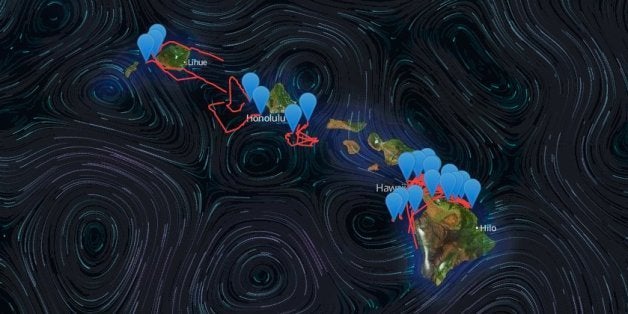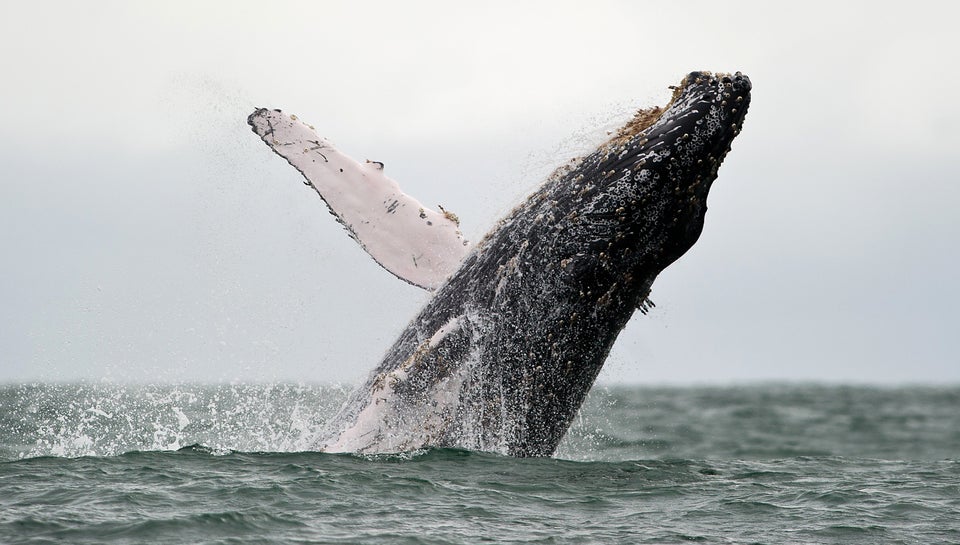
Hawaii is practically overrun by humpback whales every October through May when they come from such far-flung places as Russia and Alaska to breed in the shallower and warmer waters. You can hear them sing underwater, watch them splash from the shoreline, and see them snuggle from the air.
But Scot McQueen, the chief strategy officer on GeoEngineers' Smartmine team, wants you to know about the other whales that live and breed in Hawaii. Humpback whales might be the show-stoppers, but Hawaii sees "a lot of different species of whales," he told The Huffington Post, such as false killer or beaked whales. "These whales aren’t that well known, and there is a ton of them that need help right now."
In order to draw attention to these whales in a compelling way, McQueen had his software development team build the Smartmine Whale Tracking Map, which animates the paths of whales using data collected over recent months.
McQueen notes that, as government funding for whale research decreases, "a lot of people need to see what’s going on. It’s not just humpback whales off the coast of Hawaii, or all over world, but all these other whales that people need to understand."
Eighteen species of toothed whales and six baleen whales are known to exist around Hawaii, but until recently, according to Cascadia Research, most studies have focused only on humpbacks and spinner dolphins. Hawaiian odontocetes (or whales with teeth, such as dolphins or sperm whales) face dangers evident in waters with human traffic, such as hook ingestion, Navy sonar pollution, and net entanglements.
The idea behind the map is, according to McQueen, that if it engages people with all the varieties of whales in a meaningful way, "from that consciousness rises new opportunities all the time."
The map isn't in real-time, but based on recent data collected by Dr. Robin Baird of Washington's Cascadia Research, who tags and studies the behaviors of Hawaiian odontocetes.
With the Van Goghian lines of the wind currents and ocean swirls (using data culled from the National Oceanic and Atmospheric Administration), the map is a hypnotic way to stalk your favorite whale -- and it sure beats getting slapped by one.

